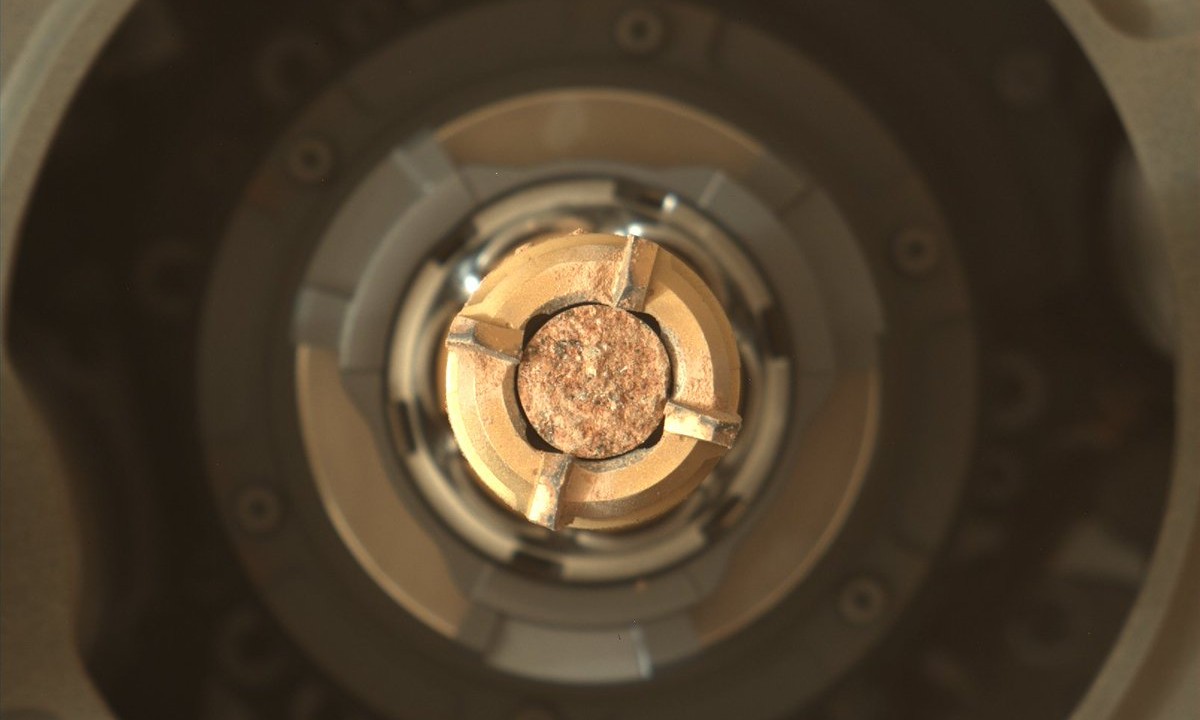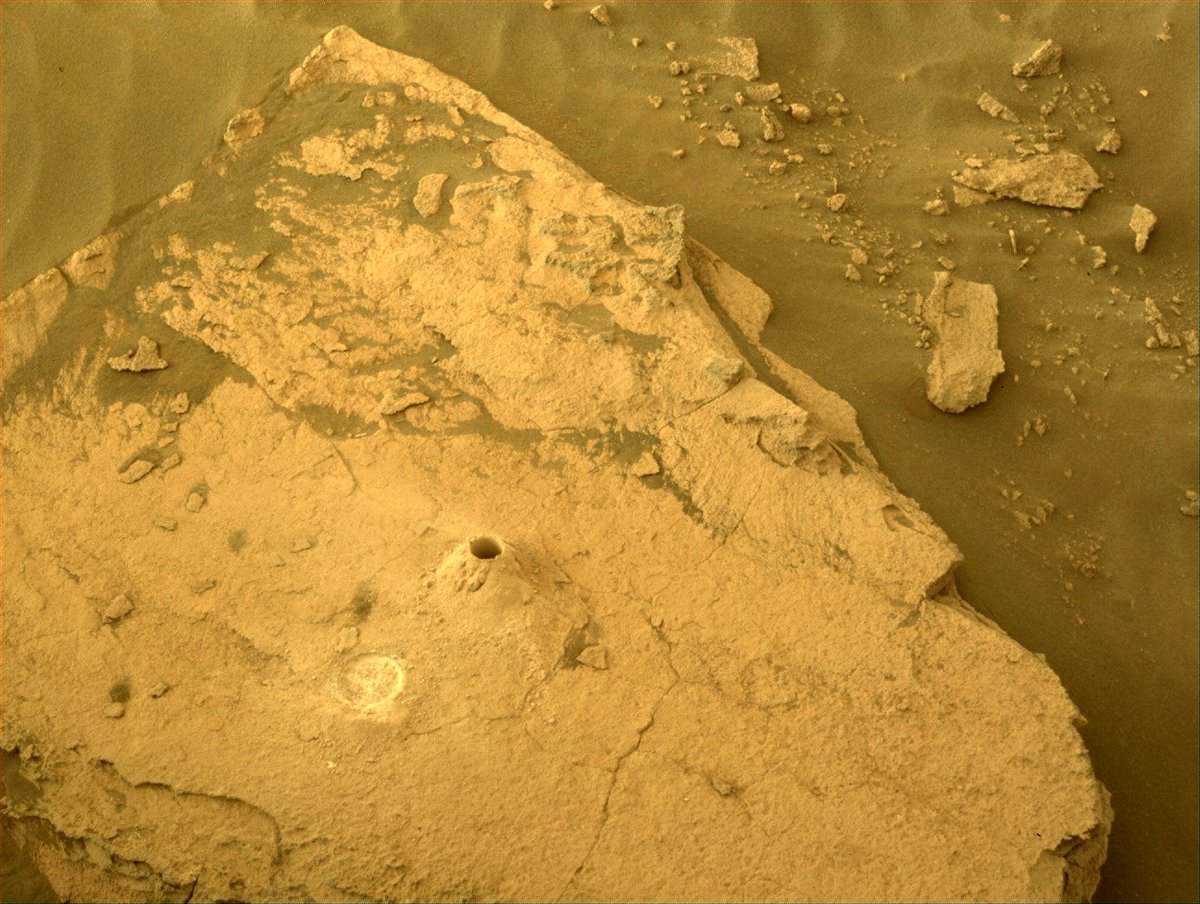NASA's Perseverance Mars rover collects 9th Red Planet rock sample
The sample may hold signs of ancient running water on Mars.

NASA's Perseverance Mars rover is digging into the surface of the Red Planet on the hunt for evidence of running water in the planet's past — and signs of ancient Mars life, if it ever existed.
Perseverance is currently exploring an ancient river delta inside Jezero Crater and recently collected its ninth Martian rock sample not far from where it originally landed in February 2021, mission team members announced.
"Rock sample #9 is in the bag! (Well, in the tube, anyway.) My team has waited years to get up close to this river delta and see what it might say about past life on Mars. This sample may well get a one-way ticket back to Earth in the future," the rover's Twitter account stated Friday (July 8).
Related: Tour Mars' Jezero Crater with this gorgeous Perseverance rover mosaic (video)
Perseverance has been exploring the 28-mile-wide (45 kilometers) Jezero Crater for over a year now in search of signs that there might have been life on Mars at some point in the planet's ancient past. Scientists believe the crater was once home to a lake and a river delta, making it the perfect place to hunt for signs of either ancient life or water on Mars. If life ever existed on Mars, the rocks in this river delta area may display evidence of "molecular fossils" — organic molecules created by ancient living organisms.
"The delta is calling and we must go!" wrote Brad Garczynski, a student collaborator at Purdue University, on NASA's official Perseverance blog on March 4 as the rover headed toward the delta. "If microbial life did exist here in the past, this is one of the best places to look for it, as finely layered muds may have buried and preserved a record of that microbial activity."

To help Perseverance look for these ancient biomarkers and places where they might be hiding, the car-sized rover is equipped with 23 different cameras and a wide variety of instruments, including an X-ray fluorescence spectrometer, a ground-penetrating radar system, and the SuperCam instrument, which zaps rocks with lasers and then examines the composition of the resulting chemical vapor. A drill is installed on the end of the rover's robotic arm, which can move with five degrees of freedom.
Get the Space.com Newsletter
Breaking space news, the latest updates on rocket launches, skywatching events and more!
Perseverance also carries two onboard microphones, allowing the rover to record the sounds of Mars.
Aside from the many rock samples the rover has collected, Perseverance has broken new ground by deploying Ingenuity, a small robotic helicopter that aids the rover by scouting new locations and objects of interest. Ingenuity has conducted 29 successful flight missions to date, the longest of which lasted 169.5 seconds.
If all goes according to plan, a joint NASA-European Space Agency sample-return mission will haul Perseverance's samples back to Earth, perhaps as early as 2033.
Email Brett at BTingley@Space.com or follow Brett on Twitter at @bretttingley. Follow us on Twitter @Spacedotcom or on Facebook.
Join our Space Forums to keep talking space on the latest missions, night sky and more! And if you have a news tip, correction or comment, let us know at: community@space.com.

Brett is curious about emerging aerospace technologies, alternative launch concepts, military space developments and uncrewed aircraft systems. Brett's work has appeared on Scientific American, The War Zone, Popular Science, the History Channel, Science Discovery and more. Brett has English degrees from Clemson University and the University of North Carolina at Charlotte. In his free time, Brett enjoys skywatching throughout the dark skies of the Appalachian mountains.










